By Kai Hoffman-Krull
The modern age could very well be termed the age of carbon. We have increased the amount of carbon dioxide (CO2) in the atmosphere by more than a third since the Industrial Revolution began. A gas that keeps heat from the sun contained within the earth’s atmosphere, CO2 makes up more than three-quarters of the greenhouse gas emissions in the world. At the same time agriculture is currently experiencing a carbon crisis, with 50-70% of the world’s carbon in farmland soils off-gassed into the atmosphere due to tillage. Carbon is the single most essential element in soil fertility as it aids soil structure development, water retention, nutrient retention, and biological processes.
The decreased fertility from our carbon loss is occurring during a changing climate, when creating resilient crops that can withstand the stress of unpredictable weather patterns will be more important than ever before. The Intergovernmental Panel on Climate Change estimates that global food production could be reduced by up to 17% by the year 2100 due to crop failures from increased weather variation. The population in the year 2100 is estimated to be 11.2 billion people. Finding ways to preserve the carbon in our soil is simultaneously an environmental and social piece of activism, something we can do on our farms to improve our soil health and the health of our climate.
One of the most central carbon retention practices is no-till cultivation. Tillage has contributed 792 billion tons of carbon emissions over the past 250 years. In comparison, humans contributed nearly 40 billion tons of carbon dioxide into the atmosphere last year. Tillage introduces unnaturally large amounts of oxygen into the soil, hastening the decomposition of organic matter (OM). As carbon from this OM is freed through this decomposition process, carbon molecules bond with the abundant oxygen introduced through tillage to become CO2, rising into the atmosphere.
If you’ve used tillage and have seen impressive results, that’s because tillage is indeed causing a biological bloom in your soil. By increasing the decomposition of soil OM, there is a short-term rise of available labile carbon—the form of carbon that fuels the microbial machinery. Fungal hyphae are torn and disrupted during tillage, and this available labile carbon generates a rise in soil bacteria, which increases the amount of nutrients that are bio-available for root uptake.
The problem is that tillage is mining this organic carbon at a very fast rate that provides immediate nutrient gain, but at a significant long-term cost. A research colleague, Dr. Tom DeLuca at the University of Montana, found that tillage in Midwest prairie soils decreased organic matter levels by 50% over a 15-year period. The additional concern with this decreased organic matter is that soil carbon levels operate exponentially. Higher rates of OM allow for increased nutrients and water to be made available, which in turn increases the production for cover crop and green manure material—two of the foundational methods of increasing soil OM. With decreasing OM levels, market crops and cover crop production decreases over time, making it more difficult to regenerate from the carbon deficiency created through tillage.
My farming mentor Steve Bensel once told me that almost everything we do in sustainable agriculture—cover cropping, animal rotations, reduced tillage, composting—all are fundamentally about increasing organic matter in the soil. And when we speak about organic matter we are in large part speaking about carbon, with carbon comprising 58% of soil organic matter. Organic matter and the carbon within it holds several key roles in soil health:
Microbiome
Carbon is the fuel source that drives the microbial network to digest minerals and make them bioavailable to plant roots, also known as mineralization. Without this biological support system processing minerals, plants have increased difficulty accessing the nutrients in the soil.
Soil aggregation
The sugars from composted organic matter pull soil particles into aggregates, providing space that allows soil to store air and water. As this structure diminishes with tillage, soil compacts more and more, requiring higher amounts of disturbance for water, air, and roots to access the subsoil layers.
Water and nutrients
Organic matter can absorb six times its weight in water, playing a significant role in holding moisture in the soil. In addition, the decreased compaction of no-till plots allows for water access through the soil layers, whereas compacted soil creates runoff that carries water and nutrients away. In a four-year study at the University of Nebraska, researchers found that no-till plots saved between 2½ to 5 inches of water per year compared to tilled plots.
Organic matter also increases the soils Cation Exchange Capacity, a measure of the soil’s capacity to hold nutrients. This means less fertilizer costs each growing season.
The no-till solution
No-till systems operate in a manner that mimics natural soil ecosystems- where the microbiome, soil animals, and root fibers develop a lattice tunnel system that aerates the ground. By building OM in the soil, no-till methods improve soil biological activity, structure, and retention of water and nutrients. Unlike tillage that maximizes benefits in the short term while decreasing soil health over time, no-till systems mature in their fertility. No-till can regenerate compacted, disturbed soils and return carbon back into the ecosystem.
While there are many new and historically modified no-till techniques being promoted for a range of farm scales, this article will cover two of the easiest and least expensive methods for transitioning into no-till agriculture: chicken rotations and occultation. They are quick, require very little infrastructure, and often can be done with scrap material laying around your farm. If you’re thinking about no-till but not sure exactly how to get started, these methods are too easy to not try.
Marketing as activism
If you start using no-till methods, tell your customers. In a time when our government is actively removing environmental regulations, we need to find ways of inviting more of our populace to participate in climate solutions. No-till is a practice that you can promote as increasing the quality of your produce, as well as storing carbon in the soil and keeping it from the atmosphere. You can see this as marketing, but you can also see this as environmental education—helping people understand the soil carbon crisis and ways they can participate in regenerating our farmlands through their purchasing decisions to create healthier food and a healthier food system for generations to come.

Chickens
You may already have no-till tractors on your farm—they’re called chicken tractors or mobile coops. Chickens are elegant in their singularity of focus—to eat vegetation, seeds, and insects on and within the soil surface. There’s nothing particularly new with the chicken no-till method: people have been using chickens to prepare ground for as long as poultry domestication has occurred. When used correctly, chicken rotations can provide one of the highest quality forms of fertilizer, decreasing your fertilizer costs and preparing your ground for your crops at the same time.
Chickens do not work in all applications, such as converting sod to garden beds, and are most effective in removing your cover crop each spring. They also should not be used for short-term, low growing crops such as salad mix or baby greens, as the manure can carry pathogens if it is not composted for at least 90-120 days. But chickens are potentially one of the easiest and most cost-efficient ways to spread biologically active manure without machinery, providing a series of cultivation and nutrient benefits that can reduce fertility expenses on your farm while increasing fertility.
The concept
Rotating chickens through your market garden can be done either with fencing (most often electric) or mobile coops that are pulled along to new ground every few days. The chickens eat the vegetation and then begin turning the top inch of soil with their feet, looking for bugs and seeds. On our market garden, Ten Alders, my wife Sarah and I get meat chickens in the winter and begin rotating them on our cover cropped ground in the middle of February. It should be noted that we live in the Pacific Northwest where winters are mild and we tend not to have any snow on the ground come late February. This method would need to be modified for areas with more snowfall.
For our one-acre garden we use 30 chickens, split up into different tractors, with 5 birds per tractor. We used to use electric fencing, but owls, hawks, ravens, and eagles started eating more of our chickens than us. Then we tried using netting over large areas, but the birds started tearing holes and still eating our chickens. So we have settled on small 4 ½’ x 7’ chicken tractors that we move onto new ground every two days.
If you can use open fencing without concern for predators, mobile electric fencing would be recommended as the most efficient means for rotations. As we do 50’ beds, it takes two weeks to prepare a bed, although we often just transplant behind the tractor as we move it along. Usually we broad fork the beds after the chickens have gone over it to improve root mobility in the soil without disrupting the soil structure. We also rake or shuffle-hoe before planting to dilute the manure in the soil, so the nitrogen does not burn the plant roots.
While we have ten laying hens for personal egg use, we went with using meat chickens for our bed clearing as it allows us a shorter period where we have a larger commitment to staying at home with the animals. Ten birds are easy to leave if given the right amounts of food and water. 40 birds get more complicated. And we’ve found that the ability to leave is part of bringing sanity and energy to the growing season. The benefits of using chickens are as follows:
Really good meat for free
Turning our cover crop into chicken feed reduces our feed costs while still converting more than 75% of that biomass into manure that is spread directly on the beds. Cover crop, especially comprised of legumes, can make up to 40% of chicken’s feed. Yet it’s the other 60% that’s most important.
Let’s do a price comparison: the Nutra Rich pelleted 8-2-4 organic fertilizer, mainly comprised of chicken manure, costs $35 for a 50 lb. bag. In our area this is the most commonly used organic fertilizer for sustainable farms. Organic whole grain chicken feed, made of cereal grains, blood meal, seaweed, and other foods costs $27 for a 50 lb. bag. Thus, when you assume that 75% of the feed biomass is converted into manure for the garden, the price for 50 lbs. of fertilizer ($35) is slightly more than the price for 50 lbs. of chicken manure from the organic feed ($33.75). And guess what else you get: free chicken! We tend to just fill our freezer because it’s easy to eat a lot of free, pasture-raised chicken.
Fertility
The Nutra Rich fertilizer and the raw chicken manure have another key difference—biological activity. Pelleted fertilizers are all sterilized with steam in the manufacturing process. Raw chicken manure has billions of bacteria that inoculate your garden soil and enhance the mineralization process to increase the availability of your nutrients.
Pest and weed control
We have found that for our soil it is best to move chickens every two days, which leaves bare soil without compacting it. This ground is partially reduced in weed seed and pests. In our garden we’ve seen a reduction in cutworms in the beds we rotate chickens through, and less weed germination than beds that were previously tilled. I would rather have pests turned into meat than eating our crops.

Problems
Chicken manure does have parasites and pathogens that you do not want to touch any edible portion of your crops. You should always wait at least 90 days, and ideally 120 days, to harvest after the chickens have moved over the garden bed. The chicken method is ideal for long growing, tall crops such as tomatoes, cucumbers, peppers, eggplant, cauliflower, and broccoli. If rotations are done in the spring, low-growing fall crops such as cabbage, storage onions, and winter squash provide enough time for the manure to fully decompose and be pathogen free.
Chicken tractor designs
Our chicken tractors are 4.5’ by 7’ and constructed from 2’ x 2’ cedar that we milled out of slab wood using a table saw. The roofs are made with three different removable sections so that you can easily access any location in the mobile coop for food, water or grabbing chickens. We are going to continue to explore different designs throughout this winter and growing season, and encourage you to search for different models that might work best for your setup.
Feed
A colleague, Dr. Louisa Winkler, has been conducting meta-level research on the influence of fermented feed for chickens and finding that a series of studies indicate significant benefits. A major feed company in the Pacific Northwest, Scratch and Peck, claims that fermented feed can decrease your need for feed by a third. Think of this as kimchi for chickens.
We have been experimenting with some of the different methodologies and finding wonderful results in the health and flavor of the chickens. While it is beyond the scope of this article, I highly recommend looking up how to prepare fermented feed.
Occultation
Occultation, a word meaning “a state of being hidden from view,” is a technique of covering beds with black tarps that was popularized by Jean-Martin Fortier, author of The Market Gardener. We started using this technique last season, and it is the easiest and quickest way to prepare new beds. Occultation is a common technique used by organic growers in Europe, and is readily gaining popularity in North America due to its ease of use and low cost.
Occultation is as simple as rolling black silage tarps over either a bed or a number of beds. The black tarp creates a warm, moist environment where weed seeds germinate and are then killed by the absence of light. To kill weed seeds in an established bed, it takes three to six weeks of covering the bed with tarps, with the longer periods taking place in the winter.
For preparing cover cropped beds in the early spring, black plastic should be put down anywhere from six to ten weeks in advance of planting. During this period earthworms move up to the dark surface and decompose the cover crop residue. Once you remove the tarp you can add your fertilizer and/or compost and then broad-fork and shuffle hoe this material in.
Occultation produces a relatively clean bed with the weed seeds already germinated and killed. By not tilling deeply, you avoid bringing the weed seed bank in the subsoil layers to the surface, meaning that each time you use occultation you are depleting the weed seed bank in the topsoil.
Occultation is as easy as rolling out a silage tarp. We have found it easier to use the smaller sizes. We purchased 24’ x 100’ rolls, and then cut them in half, as our beds are 50’ long. This small size makes layout a breeze. Large rolls are heavy and can be difficult to handle.
Growers are using many methods for no-till and reduced tillage on their farms, and the methods described here should only be considered two options among many in the growing field of regenerative agriculture. I strongly believe in trying different methods and finding what works best for you. You may likely find, like us, that combining methods is the most effective. If you can’t imagine transitioning completely to a no-till system, simply try a small number of beds and see how you notice fertility changes over time. No-till means thinking about your soil like a mutual fund, where you are investing in it for the long-term and continually building fertility for future years. The result is growing increasingly healthy and resilient crops that can handle the stress of a changing climate.
Lastly, if you are practicing no-till agriculture I would once again ask you to share that technique with your customers. If we are going to address this soil carbon crisis collectively then we must invite our customers to know the role they play in allowing the grower community to store carbon in our soils. Almost all of us know we have a carbon crisis in the air, but so few people know we have a carbon crisis in our soil. They need to know. And they need to know that there are practices of growing food that can invest in the land, store carbon from the atmosphere, and create healthier, more nutrient dense food. One of the key practices in this movement is no-till. Let’s use the marketplace as a political and environmental tool.
Kai Hoffman-Krull runs a market garden with his wife Sarah on Waldron Island, located in the San Juans off the coast of Washington State. Starting with raw forested land four years ago, they integrate vegetable and fruit cultivation with wild foraging to supply their farmers market stand and restaurant accounts on neighboring islands.
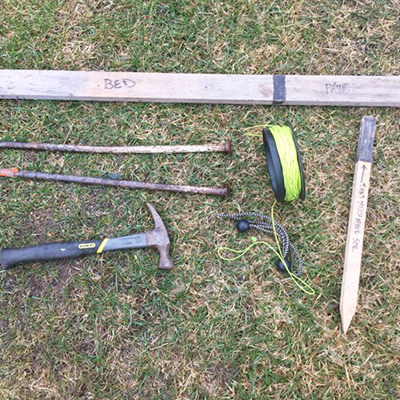
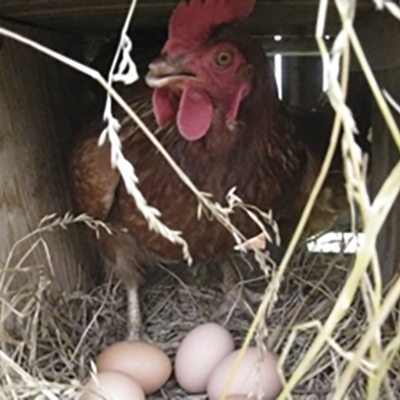




 This is the second of two articles about biochar, the term for charcoal when it is used as a soil amendment. For the first article, detailing the author’s involvement in an on-farm study of biochar from the October 2017 GFM,
This is the second of two articles about biochar, the term for charcoal when it is used as a soil amendment. For the first article, detailing the author’s involvement in an on-farm study of biochar from the October 2017 GFM, 
 High tunnels have played a crucial role in season extension for market growers, with popularity increasing over the last decade to meet demand for locally grown produce year round (or close to it). Once built, the high tunnel becomes some of the most valuable real estate on the farm and many growers are able to produce exceptional yields in the first few years. After several seasons, yields begin to decline and many growers struggle to maintain productivity.
High tunnels have played a crucial role in season extension for market growers, with popularity increasing over the last decade to meet demand for locally grown produce year round (or close to it). Once built, the high tunnel becomes some of the most valuable real estate on the farm and many growers are able to produce exceptional yields in the first few years. After several seasons, yields begin to decline and many growers struggle to maintain productivity. 



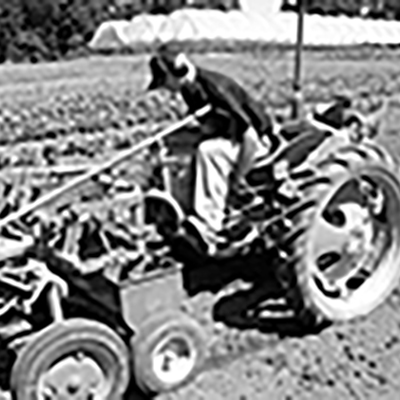

 My wife, Megan, and I grow cut flowers on half an acre of a twelve-acre property in Hurdle Mills, NC. We are in the heart of tobacco country. When we bought our property in 2013, our sales contract stipulated that the farmer had the right to harvest that year’s tobacco crop. Based on our best guesses, that marked at least the 100th consecutive year of tobacco/wheat rotations on this property. The farmer was kind enough to disc in the tobacco stubble after the harvest.
My wife, Megan, and I grow cut flowers on half an acre of a twelve-acre property in Hurdle Mills, NC. We are in the heart of tobacco country. When we bought our property in 2013, our sales contract stipulated that the farmer had the right to harvest that year’s tobacco crop. Based on our best guesses, that marked at least the 100th consecutive year of tobacco/wheat rotations on this property. The farmer was kind enough to disc in the tobacco stubble after the harvest.
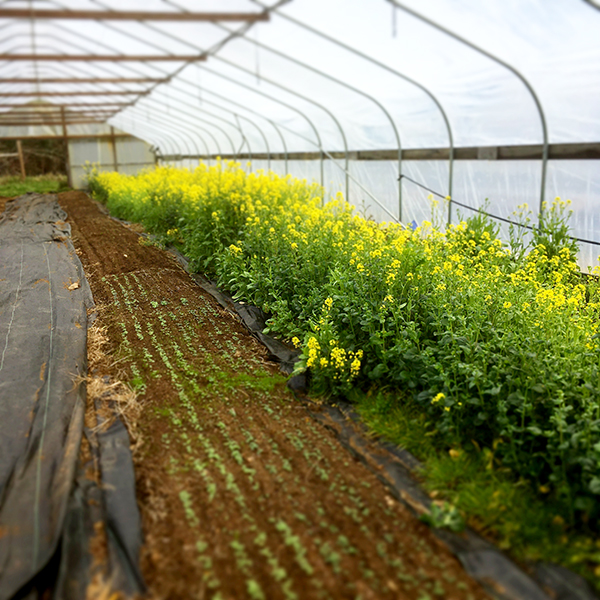 If you’ve been a subscriber to Growing For Market (or even if you haven’t), you’re probably familiar with the many advantages of no-till agriculture. No-till methods can reduce a farm’s carbon footprint, promote complex soil biology, and preserve and build organic matter.
If you’ve been a subscriber to Growing For Market (or even if you haven’t), you’re probably familiar with the many advantages of no-till agriculture. No-till methods can reduce a farm’s carbon footprint, promote complex soil biology, and preserve and build organic matter.
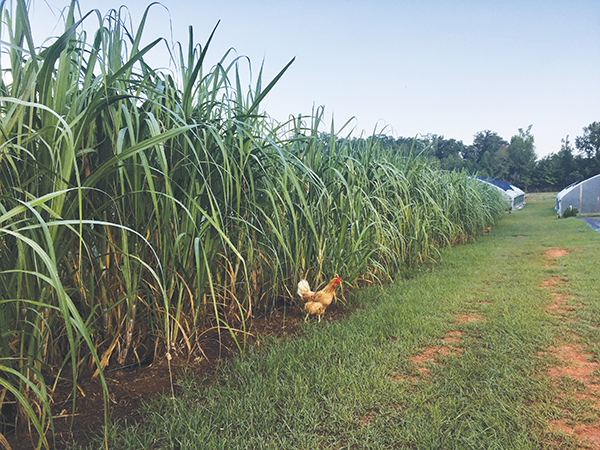 Julia Asherman appeared on my radar screen a number of years ago because she was a regular presence at the Southern Sustainable Agriculture Working Group conferences where I’ve spoken many times. Colleagues pointed her out to me as a person to watch because she was tough and smart and she was going to make something of herself as a farmer. We became conference buddies. So, when I had the good fortune to get invited to speak at the Georgia Organics Conference in Athens this winter, I knew right away I wanted to take that opportunity to visit Julia at her place, Rag & Frass Farm in Jeffersonville, Georgia.
Julia Asherman appeared on my radar screen a number of years ago because she was a regular presence at the Southern Sustainable Agriculture Working Group conferences where I’ve spoken many times. Colleagues pointed her out to me as a person to watch because she was tough and smart and she was going to make something of herself as a farmer. We became conference buddies. So, when I had the good fortune to get invited to speak at the Georgia Organics Conference in Athens this winter, I knew right away I wanted to take that opportunity to visit Julia at her place, Rag & Frass Farm in Jeffersonville, Georgia.
 Farmer to Farmer Profile
Farmer to Farmer Profile